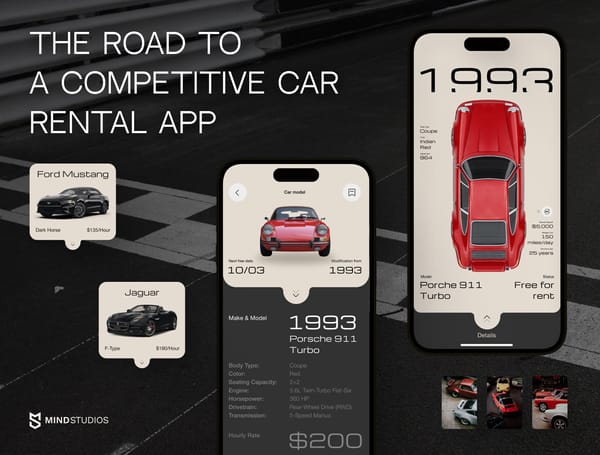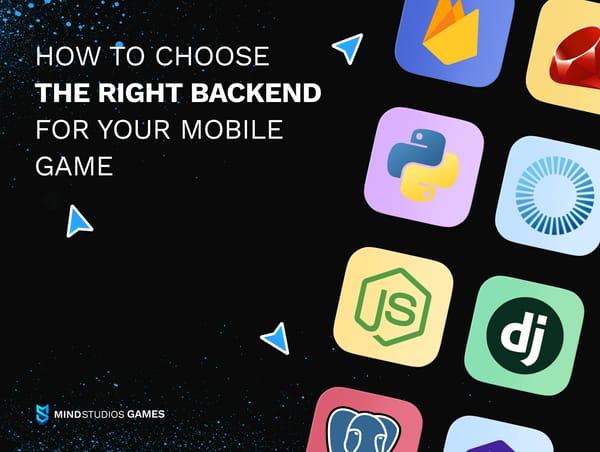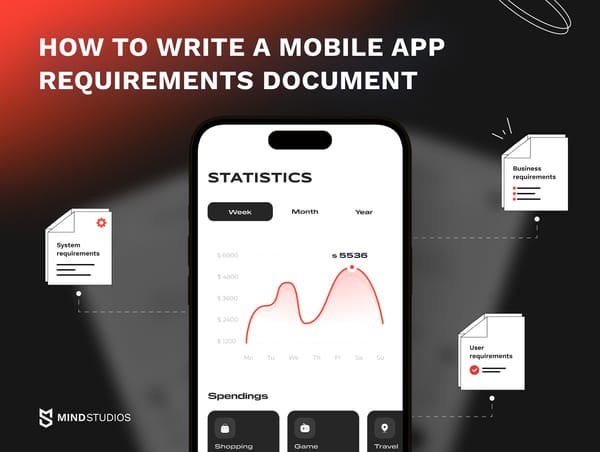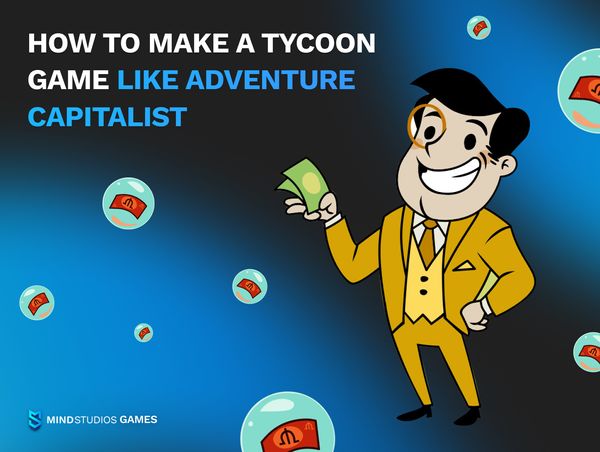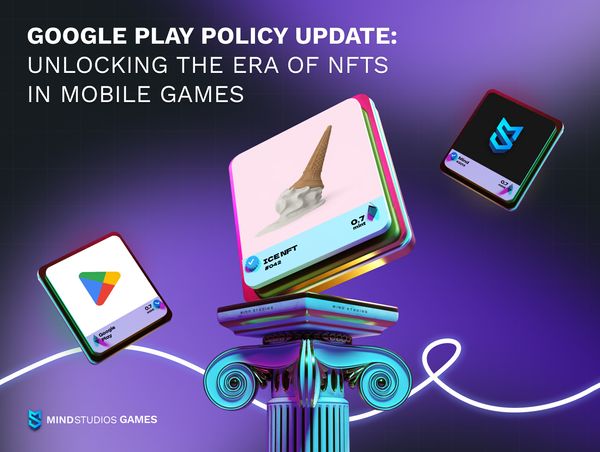In this article, we’ll be talking about creating hybrid casual games — a phenomenon that is conquering the mobile gaming charts right now.
New things are created by mixing existing ones, very few things are completely and utterly novel. These hybrids are all around us, and video games are, of course, no exception. Hybrid-casual mobile games are on everyone’s mind these days, with higher retention rates and user lifetimes than hyper-casual titles, and with more varied monetization options. If you’re here reading this article, you’re probably interested in taking a piece of this pie for yourself.
We at Mind Studios Games have been dabbling in hybrid-casual game development for some time already, mainly focusing on the idle arcade genre. Check out our tycoon-like game with arcade mechanics My Fish Shop, and our Island Survival title. This experience taught us some things we’d like to share.
If you’re deciding whether to jump into the creation of this type of games and wish to know more, please read on. You’ll find some info on how to make a hybrid-casual game that is successful, from the idea inception to launch and beyond.
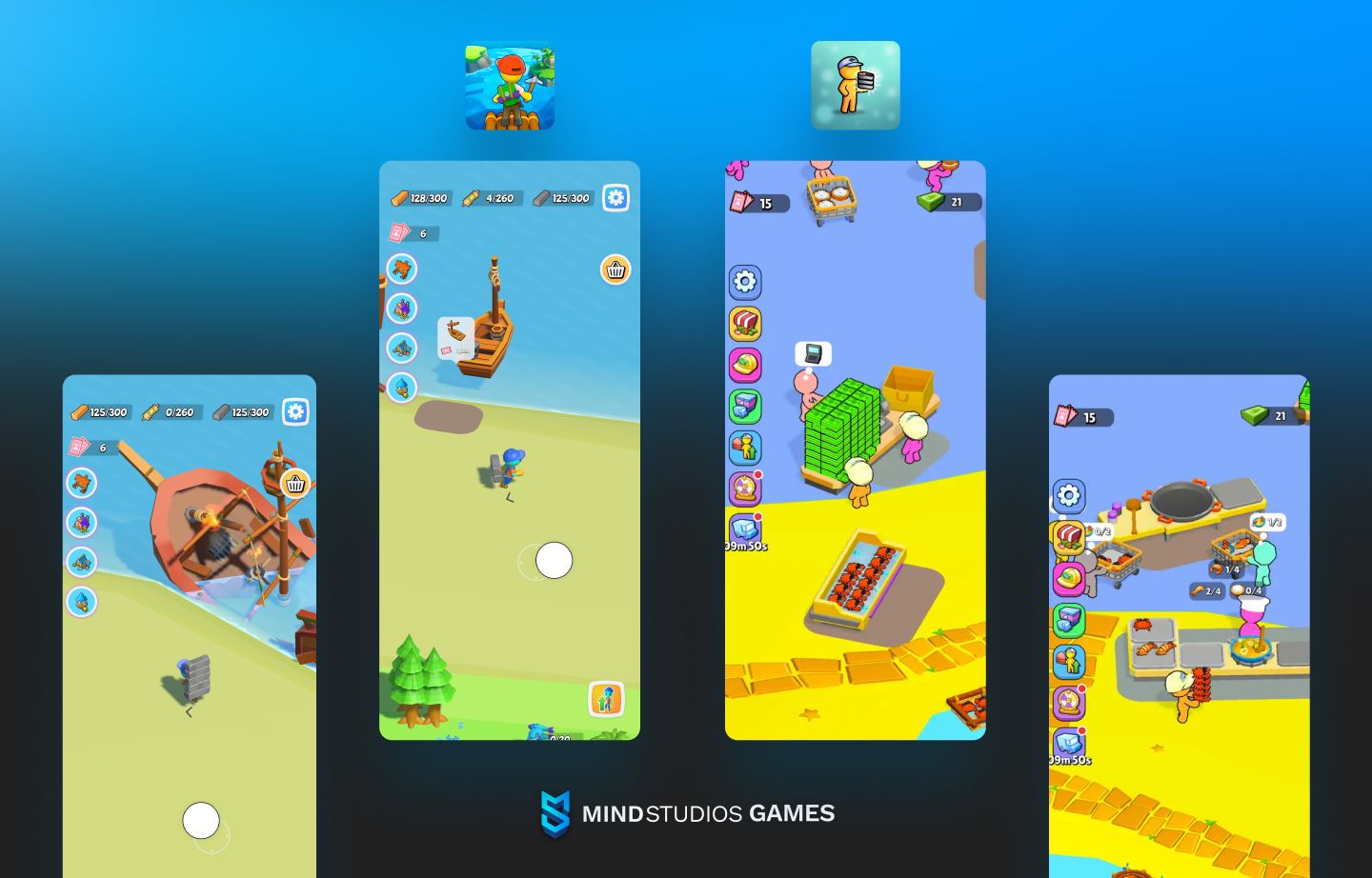
The growth and impact of hybrid casual games
The hybrid-casual genre has created a noticeable buzz in 2023. Part of the reason for that is the players’ insatiable hunger for new experiences, and another part is due to the economic circumstances and game developers’ desire to have sustainable revenue.
Here’s a what’s been happening in global marketing for a couple of years already: The cost-per-click (CPC) prices to buy traffic are increasing considerably and continuously. Multiple factors affect that, from global inflation to increased competition in online markets to questionable practices from popular advertisers.
High CPC means high customer acquisition cost (CAC) and, consequently, lower profits. Fewer businesses turn to advertising to attract online traffic, opting instead for search engine / app store optimization, social media activity, etc.
This affected mobile games significantly, especially in the hyper-casual segment that historically has low retention and short player lifetime, and heavily relies on advertising with low cost-per-install (CPI) as its main monetization model. A change was needed. And it came in the form of hybrid-casual game development.
Hybrid-casual games are sort of a new, evolved type of hyper-casual games, formed by adding to them the elements of mid-core games to increase the players’ lifetime value (LTV).
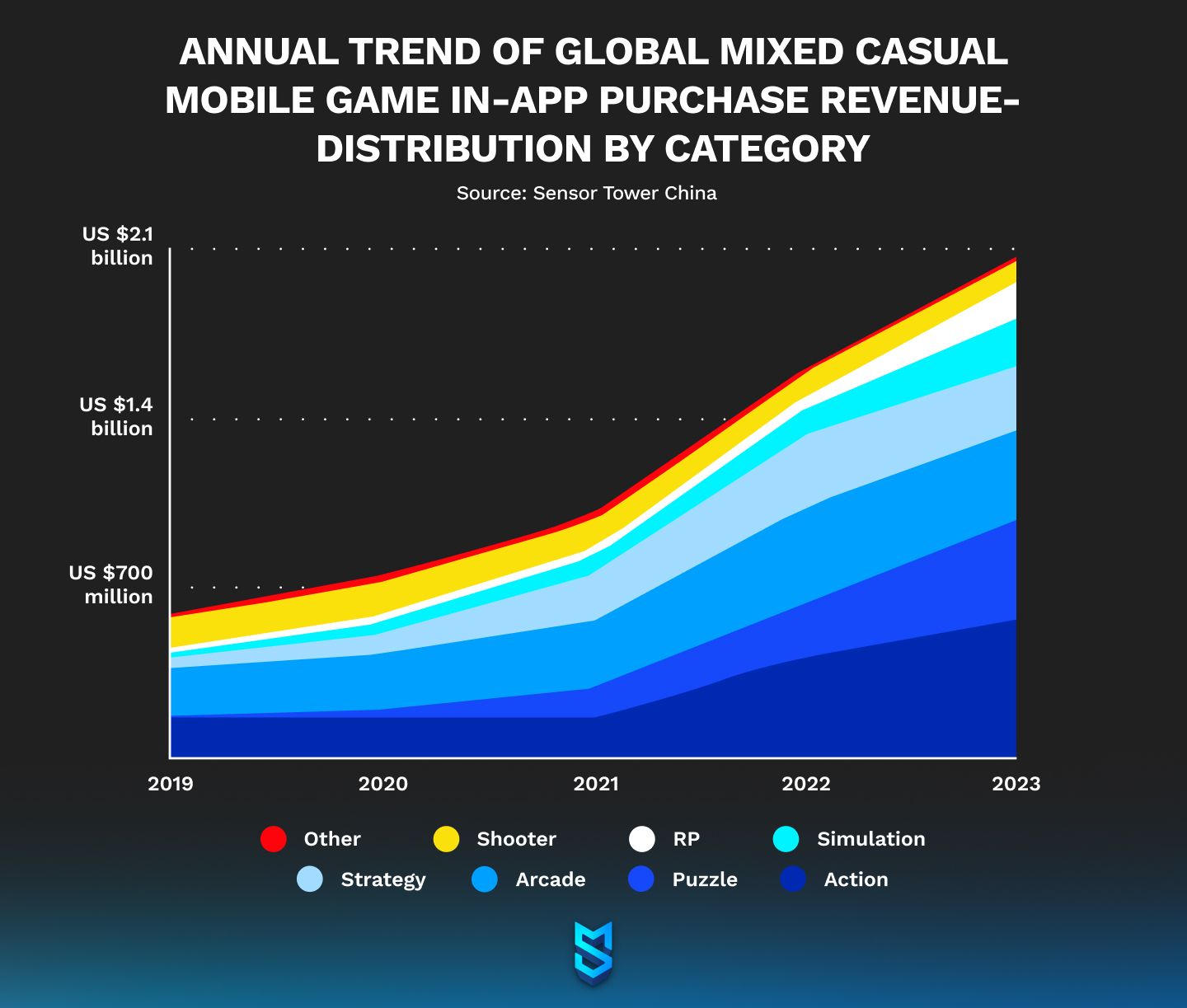
[Source: SensorTower China]
On iOS in Q1 of 2023, mid-core games held about 35% of US market’s mobile games revenue — the genre is clearly seeing good days. Moreover, mid-core games also have relatively long player lifetime, which allows them to employ a wider range of monetization models, including not only in-app purchases but also subscription-like plans alongside occasional ads.
So that’s what the developers of hyper-casual games did: They took the core features of the hyper-casual genre and fused them with player- and revenue-attracting features of mid-core games. The results didn’t disappoint.
According to SensorTower, in 2022, the genre:
- Had 5.1 billion downloads across the two biggest app stores
- Earned $1.6 billion in revenue
Since then, the hybrid casual game market has only been growing: In 2023, the genre saw a 30% growth in revenue, reaching $2.1 billion. So far, 2024 is also looking great for them.
So, how to develop a hybrid-casual game? What to take into account and what possible stumbling blocks to expect? Here’s what we recommend paying attention to.
Game design principles for hybrid casual games
Building a hybrid game is a peculiar process. You need to find balance between the genres you’re using to effectively utilize the benefits while avoiding pitfalls. And there’s a lot you need to make it work.
#1 Use hyper-casual core
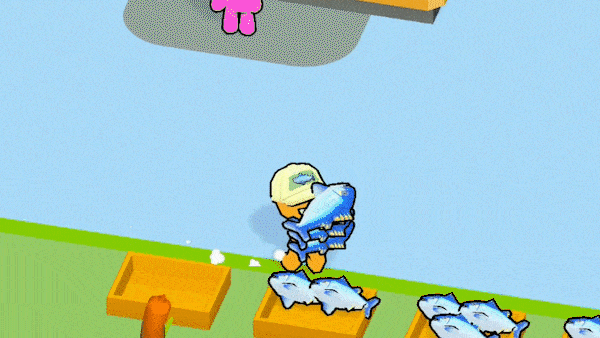
The utter simplicity and intuitiveness of mechanics in hyper-casual games are this genre’s main selling point. Hyper-casual games have repetitive limited mechanics that, however, require certain focus (in contrast to idle games, for example, although those are also considered hyper-casual by some developers).
By simplifying the core mechanic as much as you can, you can attract players who enjoy the hyper-casual type. For example, the movement mechanic in idle arcade games — a virtual joystick at the bottom of the screen — is so simple players can instantly understand what it does.
It’s possible to have more than one mechanic; the trick is in making them all exceedingly simple and in introducing them gradually as the player progresses.
#2 Add mid-core meta levels

The second most-important among hybrid-casual game design principles. Mid-core games attract players with their high engagement — that’s why they are called mid-core. Players have enough to do in the game to spend at least several dozen minutes per session there. These games also come with a wide range of mechanics, so you will have a choice depending on your game’s genre and setting. Here are just some of them:
- Collecting items/resources
- Customization
- Progression/upgrading
- Narrative design
- Social elements
For example, a hyper-casual game with a running mechanic can be turned into a series of narrated episodes that form a story; or the player’s character can collect items on the go to complete a challenge at the end. It could be weapons and potions for a battle, or money to pay off a virtual student debt. This way, players will have something to reach for besides mindless tapping and sliding on the screen with the only goal to finish the level.
Basically, you enrich the simple core mechanic with meta levels to scale the wall that is hyper-casual games’ low retention. With engagement levels increased, players will have a longer lifetime with your game as well.
#3 Balance the elements
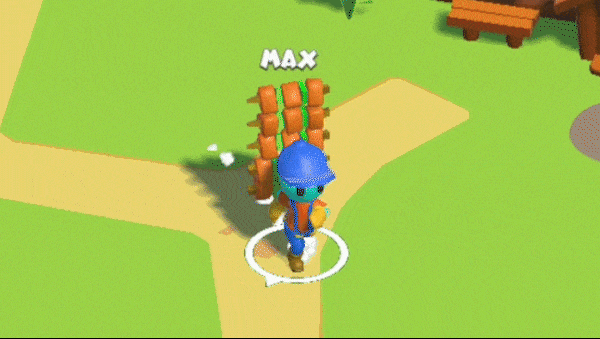
If you’ve ever watched a movie or read a fiction book with chimeras — hybrids made of parts of different creatures — you probably know that to make a hybrid successfully, its creator needs to balance all the parts. Hybrid-casual games are such chimeras, and a successful specimen needs to be well-balanced. What does that mean?
Your meta layers need to complement the core mechanic, but not dominate over it. Too many meta layers in a hybrid-casual game will feel all over the place, you’ll have to employ really strong reasoning in-game to tie them all to the core.
At the same time, the core mechanic needs to be simple enough for players to have enough attention left for meta layers. If it’s too complex, whatever bells and whistles to adorn the game with, they will go unnoticed.
So think carefully how to choose the exact mechanics that will blend smoothly, creating a rich and seamless gaming experience.
#4 Pay due attention to content
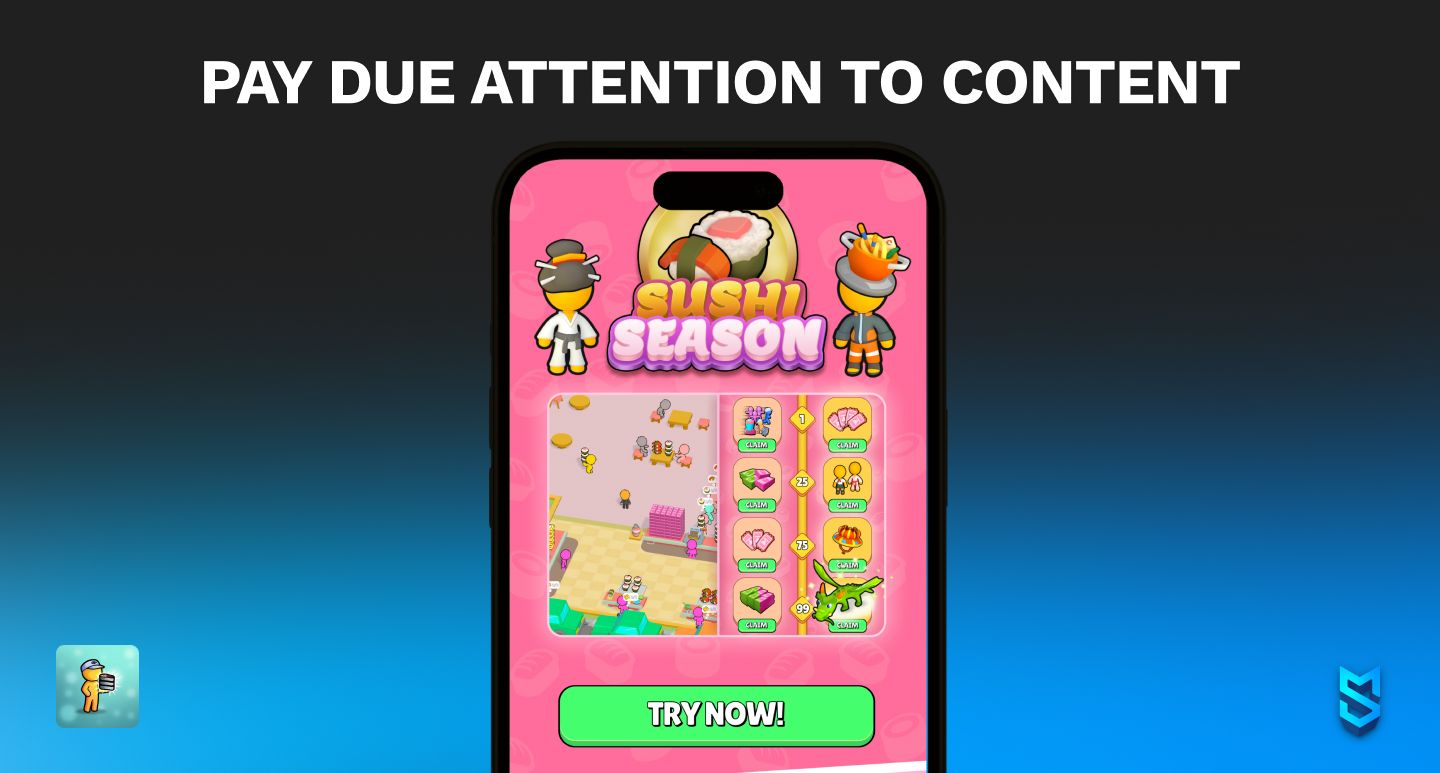
Mechanics are important, but they are merely the “How?” to your game’s “What?”. Content is what makes players stay with games for months. What is included in content?
- Levels
- Events
- Challenges
- Items and produce
- Narrative elements
Of course, not all should be dumped onto players at once. Remember about balance. But do plan for variability in content to keep players entertained for longer.
#5 Make the UI/UX intuitive
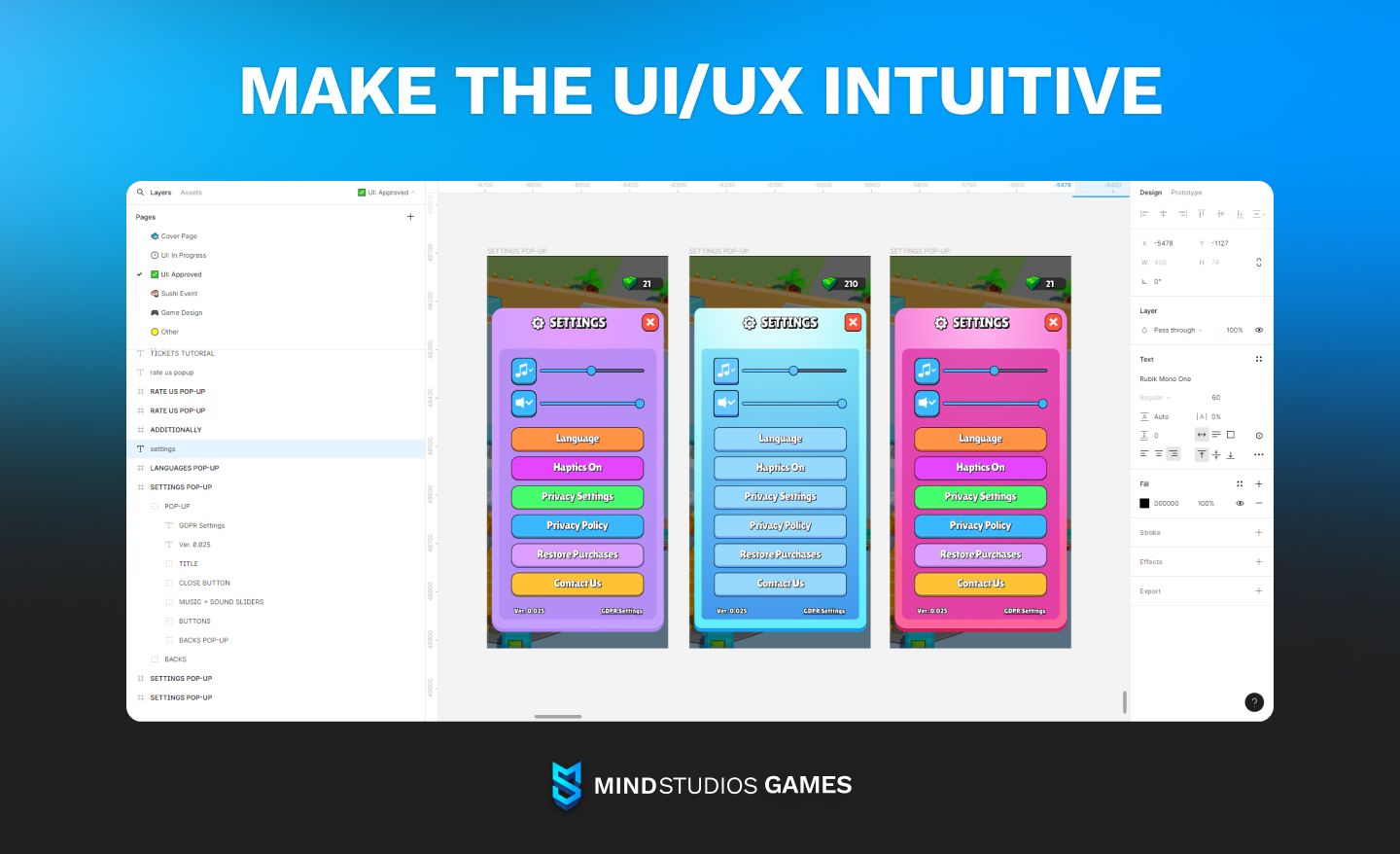
The simplicity of core mechanics needs to also translate into easy-to-grasp interface elements and paths. You need to work out the best ways to guide players through your game naturally.
Controls are critical in hybrid-casual games, as is accessibility in navigation. Allocate time for A/B tests to find out what works best. When possible, collect genuine feedback from users and make changes to enhance player experience.
Choosing the right development tools
The hybrid-casual game development process is, in essence, the same as developing any other mobile game. The difficulty lies in the game design rather than in the technical side of developing a game — combining the mechanics of different types of games might be a challenge.
That being said, it’s still important to choose your tools wisely, whether you’re new to game development or not.
When you plan to jump into mobile game development to get a piece of the delicious cake that is mobile game market revenue, the choice of tools is quite vast. Some are cheaper than others, which might be tempting. We advise thinking ahead and considering all options. Here’s a non-exhaustive list of game engines you can use for creating hybrid casual games.
Development engines for hybrid-casual games |
||
|---|---|---|
Engine |
Pros |
Cons |
Unity |
|
|
Unreal Engine |
|
|
Godot |
|
|
Stencyl |
|
|
GameMaker Studio 2 |
|
|
Construct 3 |
|
|
Cocos2D |
|
|
All of these engines are cross-platform, meaning you can develop a hybrid-casual game with any of them and port it for iOS and Android both.
At Mind Studios Games, our engine of choice is Unity. Honestly, there are reasons it’s so popular. It’s robust enough to handle both 2D and 3D games with ease, but it’s more lightweight than Unreal. The community is great! Huge, too. And because of the big and active community, the documentation is top-notch and developers can always find answers to whatever questions they have. Finally, when you’re building mobile games with commercial success in mind, Unity’s integration with monetization networks is unrivaled.
On the other hand, we know that each game project is unique and each person with a game idea is different from the next. Some might opt for open-source solutions like Godot, and some would like to build games without coding.
Besides, when it comes to hybrid-casual game development, which rarely are resource-intensive, it’s possible to build a simple game even without all the advanced features of big game engines. You just need to carefully assess your planned features, draw up a requirements document, and then look for the environment best suited for your idea. So choose your fighter as you see fit.
Coding considerations for hybrid games
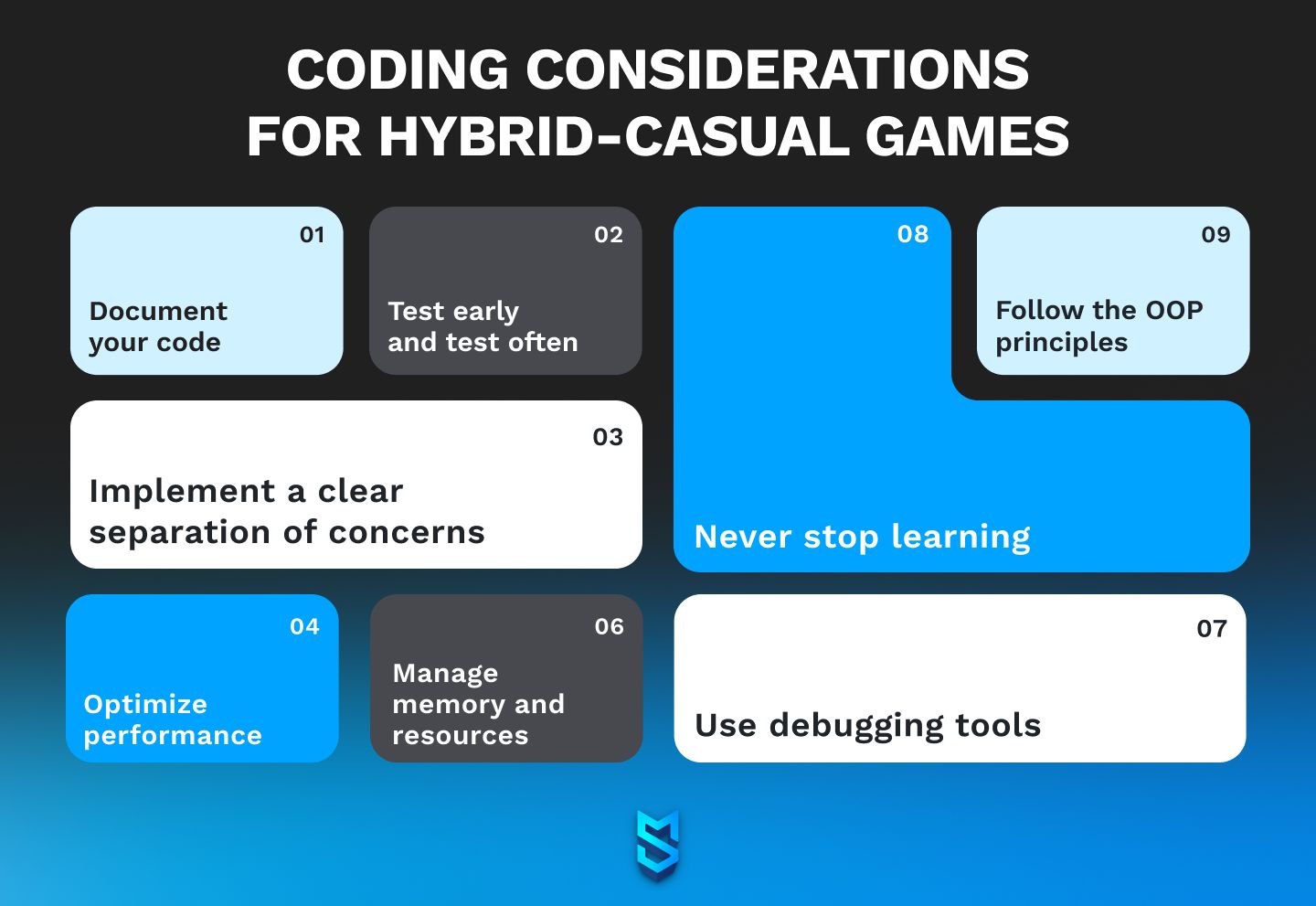
This section is for developers who would like professional advice on how to handle the development process of hybrid-casual mobile games. We’ll be short and just list the most vital things.
- Document your code. Document APIs, class interfaces, and important design decisions to improve collaboration and maintainability. You’ll thank yourself later when you need to get back and find where that tiny bug originated from, or which API is in conflict with new functionality. Besides, if several people work on the product, the documentation will greatly aid the collaboration.
- Test early and test often. The later you begin testing, the higher the chances you’ll need to redo a big chunk of the code, if not all of it. Some bugs start tiny and easy to miss in some first stages of development, and when you discover them it’s an avalanche of problems that affect the whole player experience.
- Optimize performance. Mobile devices come in all shapes and forms, performance-wise. You don’t want to limit your pool of audience by making the game unnecessarily demanding. Efficient handling of data structures and algorithms can save you a lot of headache, making the game lighter and faster.
- Implement a clear separation of concerns. Divide your codebase into logical modules and layers, and avoid tightly binding different parts of your code. This will help you debug, modify, and overall maintain the code more efficiently.
- Manage memory and resources. Use object pooling to reuse objects and minimize object creation and destruction during gameplay. With this, you’ll be able to prevent memory leaks, performance drops, and excessive overhead.
- Use debugging tools. Mechanisms for error handling and logging can assist in finding errors during development, identifying bottlenecks, and optimizing the code.
- Follow the OOP principles. Object-Oriented Programming is a set of principles created to help developers organize their code and make it maintainable and scalable.
- Never stop learning. The game development industry is growing rapidly, keeping an eye out for new approaches and solutions will help you build better games faster.
We hope these will help you become a better, more efficient game developer.
Graphics and sound design
No one can argue the importance of visuals and sound in a video game. In fact, it’s not unusual for players to continue playing a game even if it’s getting boring, only because they’re finding it visually pleasing.
Now, the hybrid-casual genre leans towards simplicity in visuals — they take that from hyper-casual games. The level of “simplicity” varies, of course, and as the market is getting saturated, we will most likely see somewhat intricate graphics here soon as well. Moreover, even “simple” graphics aren’t as easy to do right as one might think. In fact, it might be even harder to make simple visuals stand out compared to gorgeous and detailed designs.
Our recommendations for graphics in hybrid-casual games
Here’s a list of practices we follow when creating hybrid casual games.
| Choose the art style to match your theme and setting | This might sound obvious, but it’s surprisingly easy to get it wrong, especially when you need to keep it simple. Even a small detail like having your stickman characters wear hats that correspond with the historical setting can increase player satisfaction. (We know because we’ve been there.) |
| Optimize assets | To make your game run smoothly on any mobile device, you need to optimize all the shapes, textures, and animations. Use compression techniques to minimize loading times and memory usage, and optimize rendering to maintain smooth gameplay. |
| Make the graphics scalable | Once again — mobile devices come in a wide range of screen sizes. Your assets need to be adaptable to make playing pleasurable and convenient to all users. |
| Optimize colors | Too bright colors are painful to look at and are rarely comfortable to play with for long. But make them too muted, and it can be hard to see where one object ends and another begins. Preferable colors will also depend on your game’s theme and setting, as people have certain preconceptions. There’s a lot to consider with color palettes. |
| Make graphics settings adaptive | The simplicity of most hybrid-casual games rarely asks for this, but if your game idea includes somewhat detailed graphics and textures, you need to consider adaptive settings for visuals. |
Sound in hybrid-casual mobile games
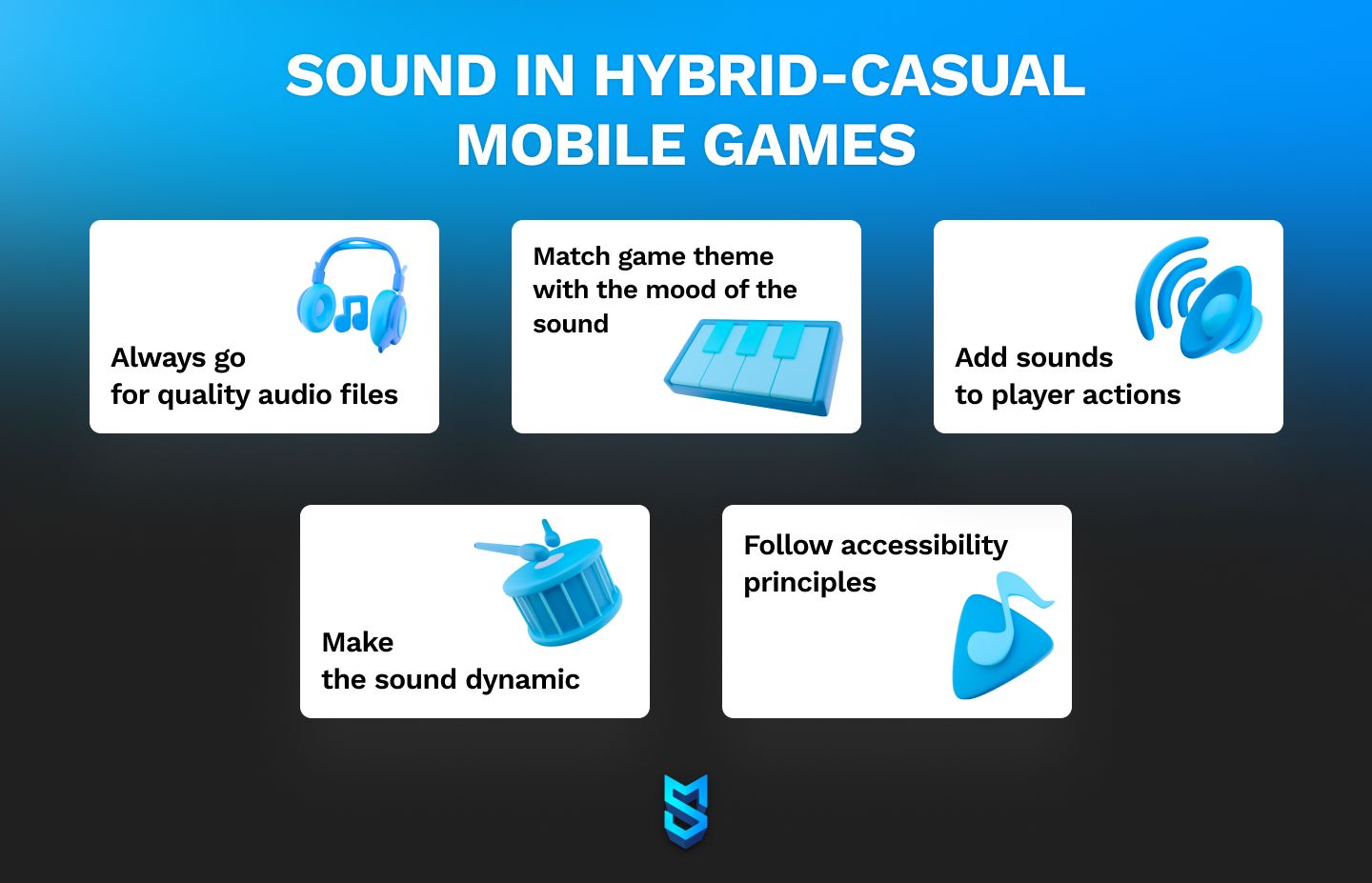
It’s easy to overlook the sound issue in a mobile game, but we advise against that. Do pay attention, as sound is integral to the gaming experience. Moreover, in games as simple as hybrid-casual — visually and mechanics-wise — the importance of sound is even higher.
Here are 5 tips from us:
- Always go for quality audio files. Your players’ mobile devices might have hardware that’s on the lower end of its class, and with poor quality sound, the game will make users ears bleed. You don’t want that, do you?
- Match game theme with the mood of the sound. It might be unexpectedly fun to manage a graveyard while accompanied by an upbeat flute trill and birds chirping, but you should be careful when matching sound and visuals. Not many people will appreciate too big a contrast.
- Add sounds to player actions. Besides the background theme music, also think about implementing sound as reaction to taps on the screen and to accompany different actions. A character gathering berries shouldn’t sound the same as them hitting a rock to mine ore. Pop-ups should also have a sound of their own.
- Make the sound dynamic. For example, the sound can go lower during a battle compared to while the character is peacefully working on something. But do it in moderation — balance is important here.
- Follow accessibility principles. Chances are, some of your players might have hearing impairments or disabilities. To provide them with an equally engaging experience, make the range of sound settings wider. You can offer players a wider range of volumes and, if you have a voiceover, an option to turn on subtitles.
Monetization strategies
As was stated above, the parent genre of hybrid-casuals, hyper-casual games typically suffer from short player lifetime and low retention. This essentially prevents effective use of any monetization model aside from ads — players don’t stick around long enough to make in-app purchases a viable long-term option.
The hybrid-casual genre has overcome this issue. Thanks to borrowing the engaging elements from mid-core games that have long player lifetime and high retention, it became possible for hybrid-casual titles to implement hybrid monetization as well.
In the hybrid casual games monetization model, the main way to get revenue is by combining in-app purchases (IAPs) with ads. In some cases — mainly when a game becomes reasonably popular and its players show a long lifetime — it even becomes possible to introduce subscription-based monetization.
How does that work?
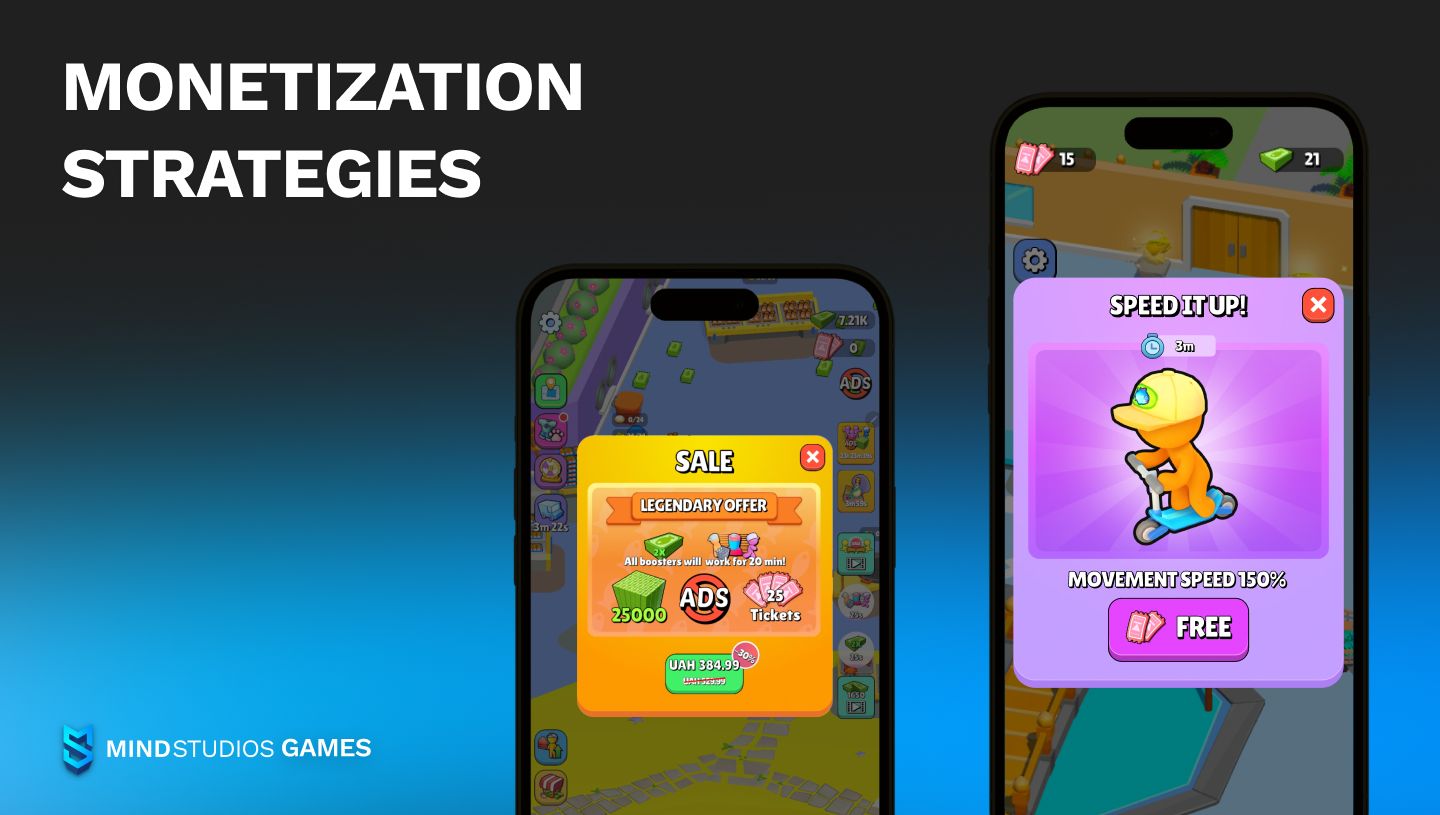
Depending on what kind of elements you combine from casual / hyper-casual and mid-core games, you can offer cheap and moderately priced temporary boons as IAPs and permanent ones for a subscription.
The most popular such boon in hybrid-casual games is, predictably, the option to get rid of interstitial ads. Interstitials are the unskippable full-screen ads activated from time to time in mobile games. They’re the primary way for game owners to monetize players who don’t use rewarded ads and don’t make in-app purchases.
Interstitials irritate many users, of course. Which is why players who like the game will gladly pay a moderate price to get rid of them. The secret to success here is to find that golden price that will be low enough for players and high enough to bring in sufficient revenue compared to interstitials.
Other options for IAPs can be the boosters — speeding up production, extra lives, increased inventory capacity, etc. You can offer temporary boosters for a cheap price as an alternative to rewarded ads, or you can give them as some kind of semi-permanent or daily reward in a subscription. Kind of like a battle pass.
Distribution platforms
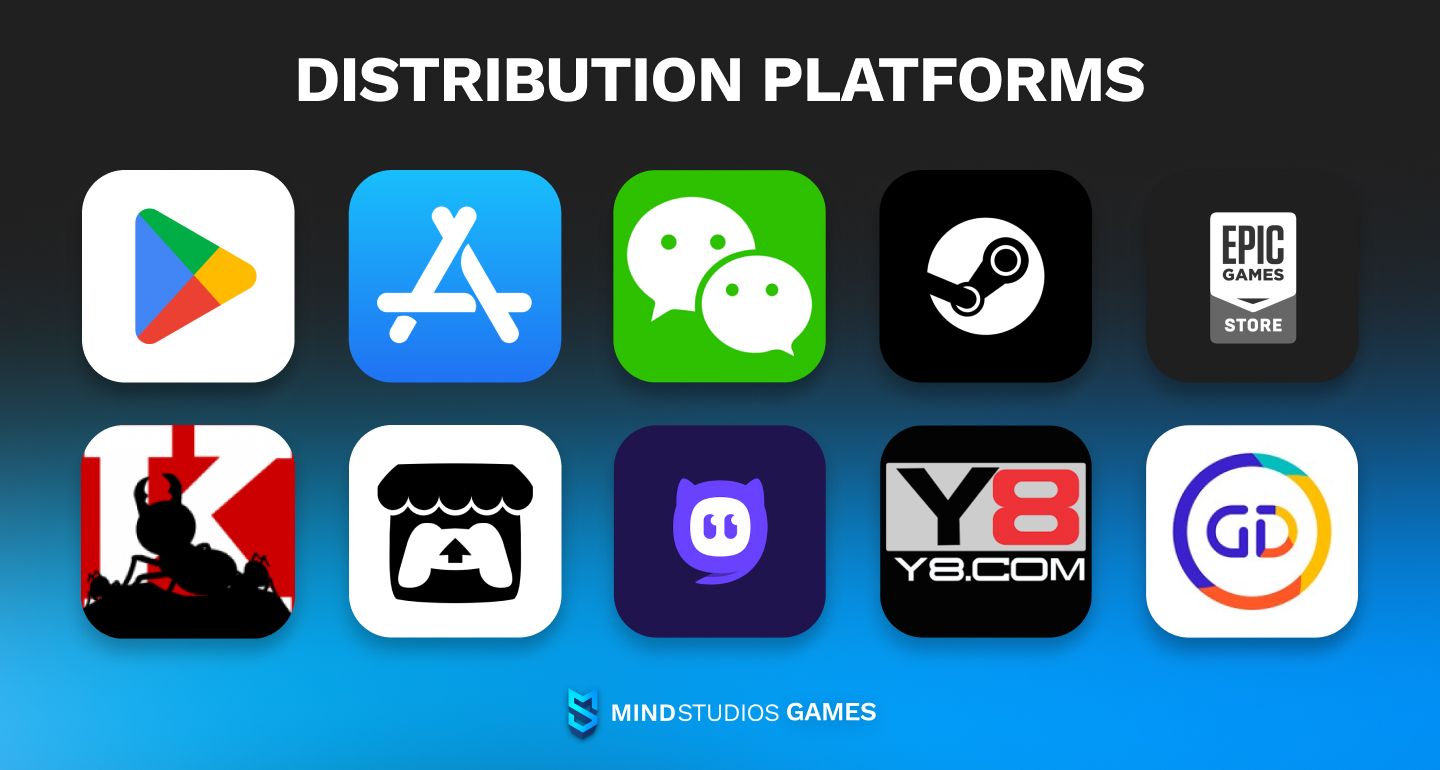
Hybrid-casual games are typically launched on:
- Mobile devices (iOS, Android)
- Web platforms
Social networks are, in theory, quite suitable for hyper-casual and idle games, and Facebook even had its Gaming section, for example. If it were still a thing, that would also be a suitable platform. It’s been discontinued, though. So far, the only social network that has a thriving gaming environment on it is the Chinese WeChat. But that’s a super app, so…
Desktop platforms like Steam and Epic are another option. Steam itself has a whole section on casual games, so it might be worth a try for hybrid-casual ones as well. Epic Games has such a category as well, and their overall approach to categorizing games allows options to place your hybrid-casual game in a variety of categories besides casual.
Overall, mobile app stores offer the most convenient space for the hybrid-casual genre of games.
People use mobile devices all the time, and you want your hybrid-casual game to be accessible to players whenever they have even a short break in daily routines. App stores are also a good place to market your app naturally, without paying extra to attract traffic — just do your due diligence in app store optimization (ASO). And, of course, there’s also the option to pay to be on top of search results for your chosen keywords.
So what will you need to do to launch your game in an app store? You have two options here:
1. The indie way |
Registering your own developer account takes very little time and is not at all expensive. Google Play Store takes a one-time fee of $25 upon registering, and you’ll be able to publish as many games as you want there. The Apple Developer Program has a subscription model — you’ll have to pay $99 annually for as long as you want your games to be available to users. After successful registration, you can upload your game to the account and submit it for review by moderators. Once it passes, it goes live. Easy as that. |
2. Via a mobile game publisher |
Your other option is to approach a mobile game publisher that works in the hybrid-casual genre. Publishers work for a share of revenue, and that share usually varies from 20% to 80%, depending on the publisher and the details of your collaboration. But there are pros to it as well:
|
Both options have their pros. Indie publishing is cheaper and easier, but you’ll have to shoulder all the marketing on your own. A reputable publisher is a great partner in marketing and to obtain information and feedback, but a publisher will take a share of your revenue, and you’ll need a solid pitch to be published by a trusted company.
As for the web-based publishing, your options are similar: your own website or a game publisher website. There are a bunch of those, here are just some that pop out in my head right away:
- Kongregate is a famous game publisher for both mobile and web games
- itch.io is a nice platform for indie games
- CrazyGames is compatible with games built on a variety of game engines
- Y8 is a multipurpose platform where you can publish not only your games but also gameplay and walkthrough videos
- GameDistribution is a platform for connecting game developers with publishers (Y8 and CrazyGames are among their partners)
- Poki offers game testing alongside hosting and other services
Case studies and success stories
In a relatively short time since its inception, the hybrid casual game market has already introduced quite a number of hits.
Idle core + arcade meta: My Perfect Hotel
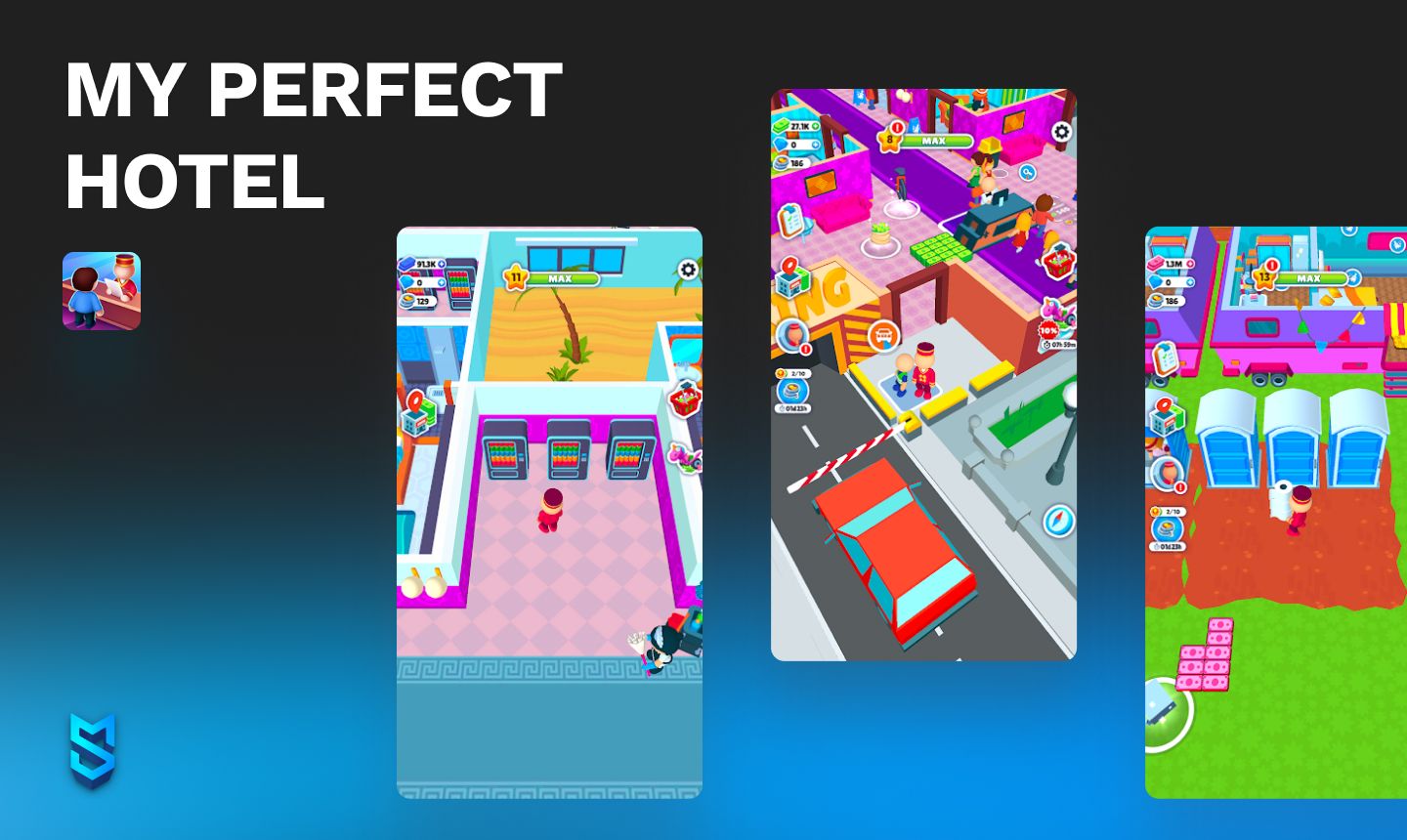
With the idle core of a tycoon management game and the mid-core arcade meta layers, My Perfect Hotel became a hit in the first month post launch in August 2022 and is still topping the charts.
The secret behind this game’s success is the developer’s thorough work on the setting, mechanics, and monetization, as well as a smart use of LiveOps. You can read our analysis of this game in our other article.
Casual core + narrative meta: Project Makeover
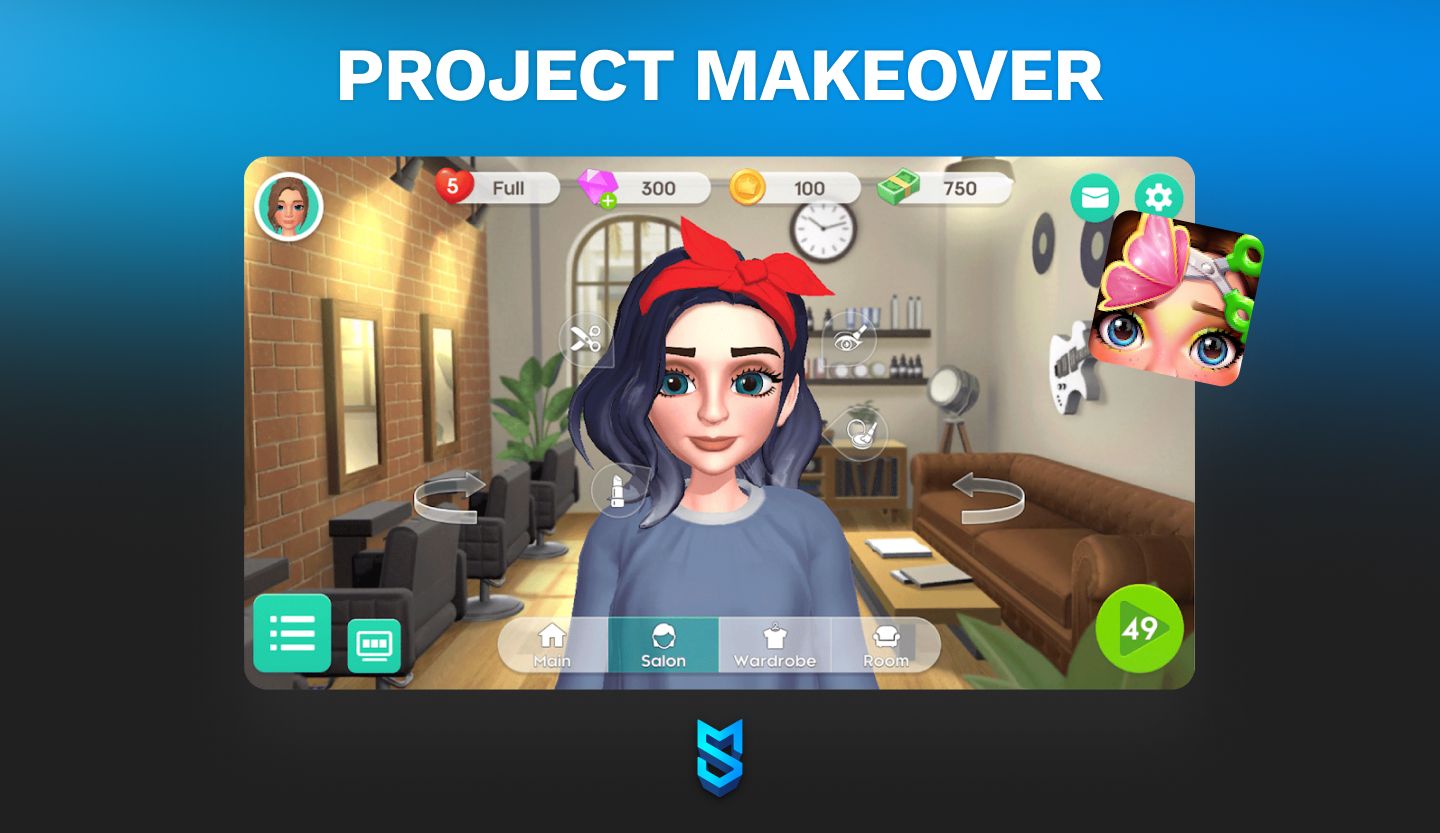
Project Makeover is a match-3 game, meaning it uses a core from casual games rather than hyper-casual ones. However, it is considered a hybrid-casual title by most developers. It mixes the match-3 core mechanics with a deeper narrative of mid-core games — there’s a story that develops through the whole playing process.
The winning feature of Project Makeover, in our opinion, is this very story, which runs deeper than most similar games and sucks players in not unlike Drag Race, Bachelor, or other reality shows. The fashion and interior design setting was a great choice.
Hyper-casual core + RPG meta: Archero
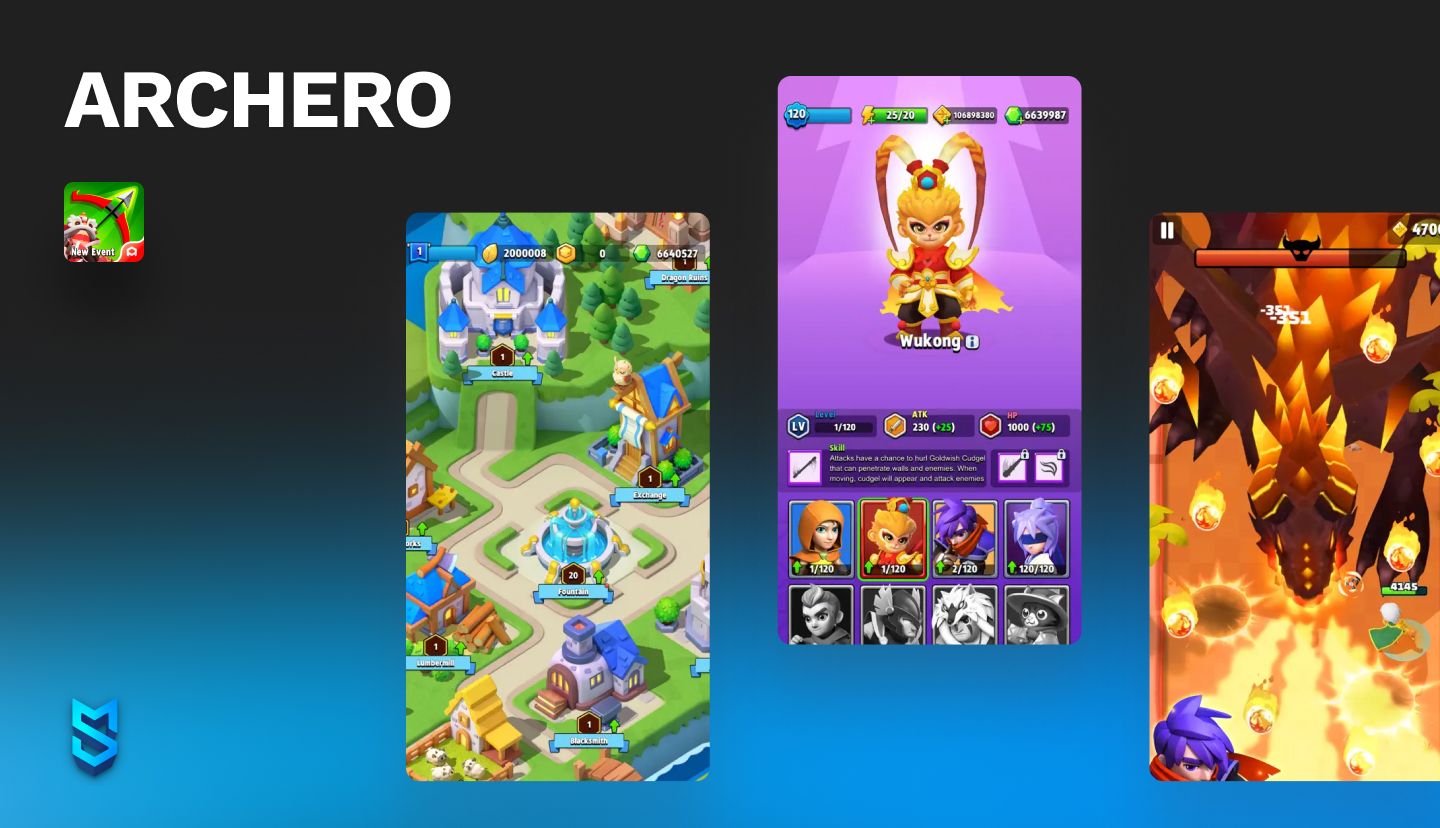
This game is actually believed to be the very first hybrid-casual game ever. Hence, it’s the benchmark example of hybrid-casual game development. Released in 2019, it earned over $8.4 million in its first month.
The hyper-casual core of this game is represented by it having only two mechanics — in Archero, players can either move the character, or shoot projectiles. And its meta layers are that of a classic RPG games, where you can obtain and upgrade weapons, level up your hero, and fight enemies.
Archero is known for its easy start and challenging progression, which keeps players on their toes and reluctant to end the session or abandon the game.
Hybrid-casual games by Mind Studios Games
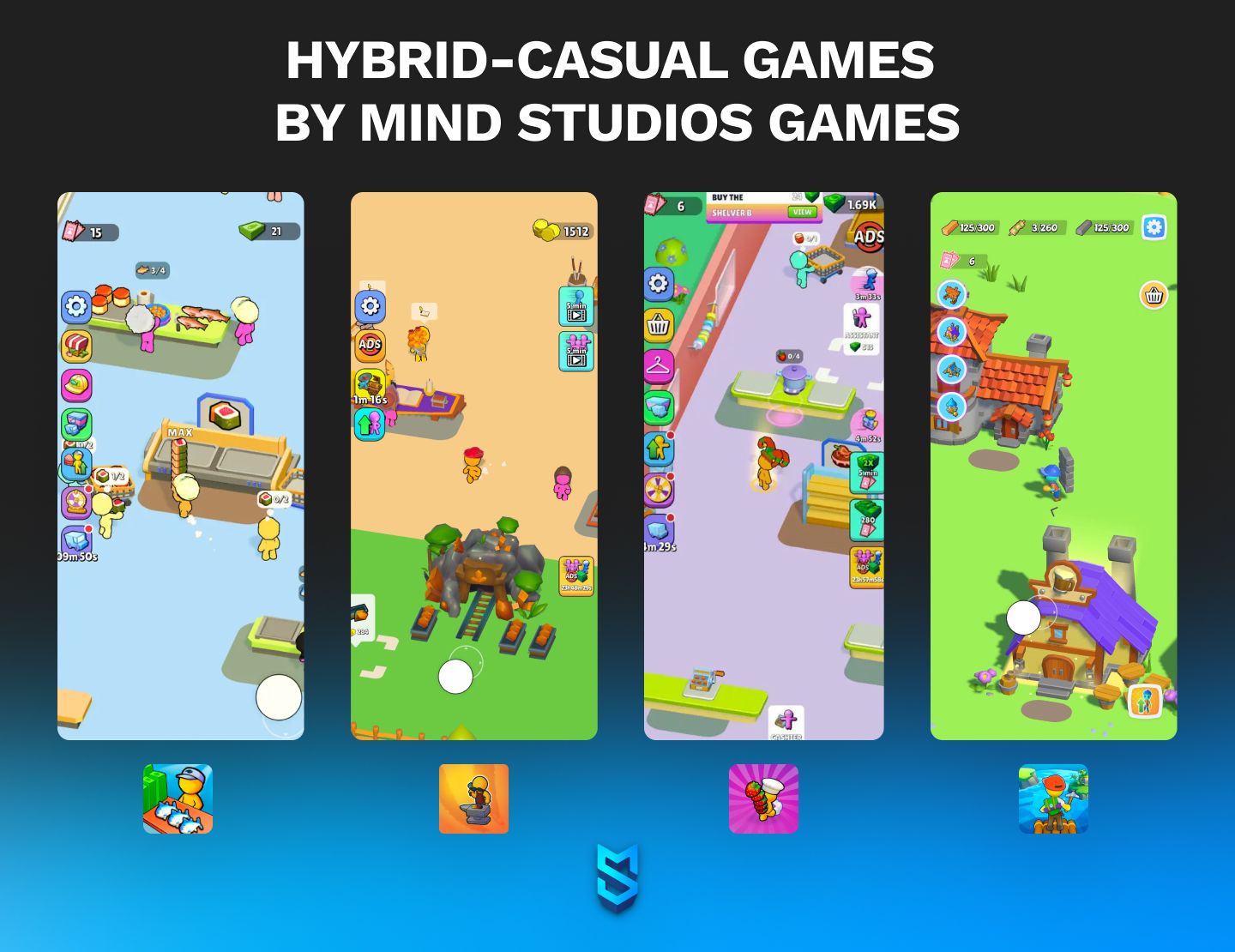
Hybrid-casual game development is something we’ve been doing for a while.
Idle arcade: My Shop series
Currently, this series of our games consists of three titles: My Fish Shop, My Candy Shop, and My Craft Mart. All three are tycoon-style games with a hyper-casual core (only one basic mechanic — collect and distribute items), mixed with idle management and progression systems as well as mid-core arcade loops.
Hyper-casual + construction: Island Survival
We set this game on an island where our main character crashes his ship. He then needs to survive by building and developing a settlement. The hyper-casual single mechanic of collecting materials is mixed with the mid-core building mechanics, where players will upgrade buildings to make living arrangements better for the main character and other survivors. Check out the game here.
Conclusion
Hybrid-casual games are showing all signs of being a long-term trend. They combine the intuitiveness and simplicity of hyper-casual games with the high engagement of more sophisticated titles, attracting both kinds of players. Wide target audience, an opportunity to implement a hybrid monetization model, and proper marketing can indeed bring those who develop a hybrid-casual game renown and revenue.
If you have an idea for a game and would like to work through it to find ways to make it successful, drop us a line — as a team who has created a number of hybrid-casual games, we’ll be happy to share our expertise.

